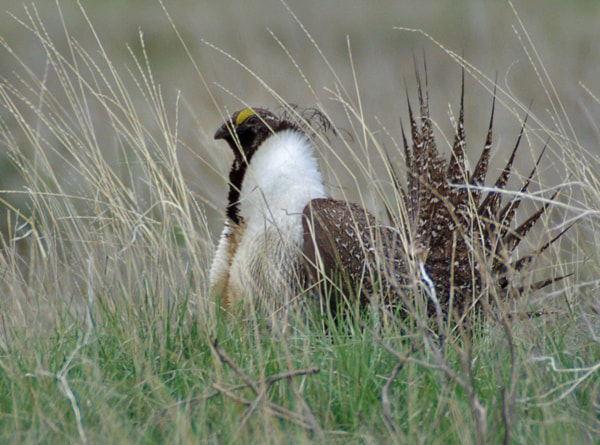CALGARY — A flamboyant bird known for its elaborate courtship rituals is on the edge of extinction in Canada largely due to extensive energy exploration in southeastern Alberta and southwestern Saskatchewan.
The sage grouse is the largest of its species in North America and is found primarily in Montana, Wyoming and Colorado. Its northern range extends into Alberta and Saskatchewan.
But even south of the border the bird’s numbers have been dwindling at an alarming rate.
“The populations have been declining range-wide. There’s several hundred thousand birds in the United States across the West, but populations continue to decline,” said Cam Aldridge, a Colorado State University professor attending a two-day summit on the future of the sage grouse.
“Oil and gas activities are the major culprit within Wyoming and within Colorado resulting in local extirpations of local populations.”
In Alberta, the population has gone from about 1,000 in 1980 to around 30 today — 13 males and 17 females. In the 1960s, the numbers were so plentiful that hunting was allowed.
“Over the last 30 years there’s been an escalation in the amount of oil and gas development, primarily natural gas development, in southeastern Alberta that has disturbed the habitat and the recruitment of young birds into the population,” said Mark Boyce, a biologist at the University of Alberta.
“The population has dropped off precipitously.”
“I would suggest that in Canada this is probably one of the most endangered species,” agreed Aldridge.
A number of leading scientists, conservationists and landowners are working to come up with a plan, including emergency actions and longer-term recommendations, for the survival of the species.
“The sage grouse and mountain plovers, which live in the same general area, are the two most endangered species in Alberta, if not Canada right now,” said Cliff Wallis, vice-president of the Alberta Wilderness Association, which organized the summit.
“We’re talking about precipitously low populations. We’re talking dozens ... not hundreds of birds anymore.”
Wallis said the sage grouse is also suffering because overgrazing and conversion to crops have destroyed the bird’s native grassland habitat. The grouse require sagebrush, which is a major part of their diet, and grass deep enough to provide protection from predators.
He said the Alberta and federal governments are aware of the plight of the sage grouse, but so far have failed to act.
